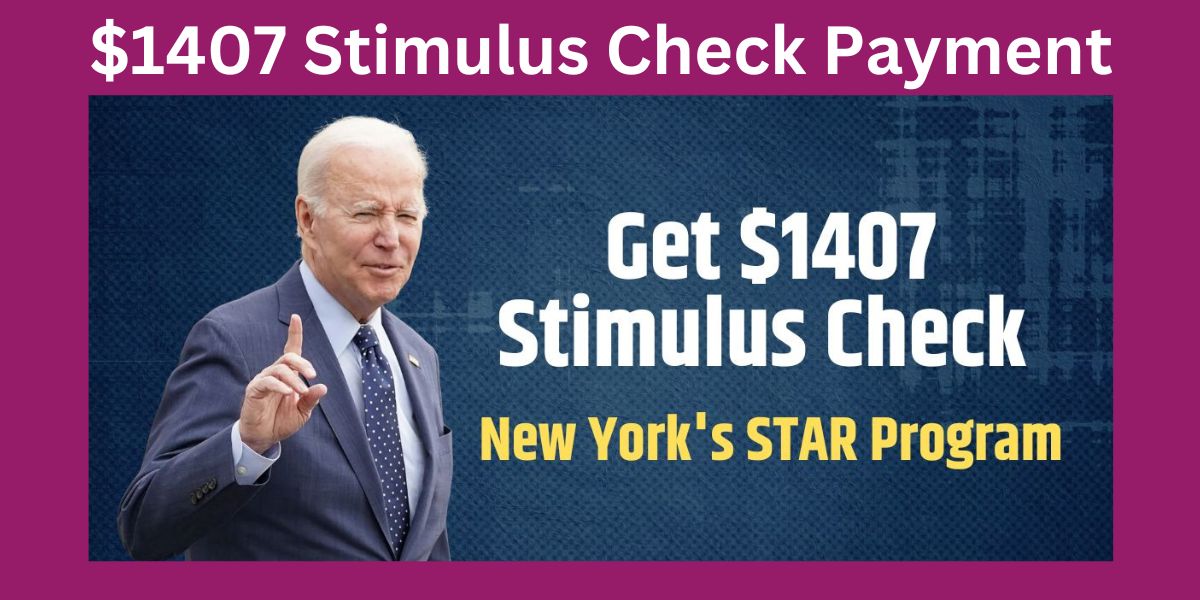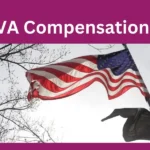You heard right! The $1407 stimulus check payment can still be claimed, and if you haven’t gotten yours yet, you might be in for some good news. We all know how vital these checks have been in helping people make ends meet during challenging times. But what if you missed out? Don’t worry; you might still be eligible to get that money into your bank account. Let’s dive into the details and find out everything you need to know about this opportunity.
What Exactly is the $1407 Stimulus Check?
The $1407 stimulus check is part of a series of financial relief payments provided by the government to help individuals and families navigate the economic challenges brought on by recent events. It’s essentially free money sent directly to qualifying individuals and families to spend as needed.
Why Was the $1407 Stimulus Check Issued?
The government issued these checks to stimulate the economy by putting money directly into the hands of consumers. The idea was to boost spending and help businesses stay afloat during tough times. Whether you spent it on groceries, rent, or saved it for a rainy day, the goal was to keep the economy rolling.
Who Qualifies for the $1407 Stimulus Check?
You might be wondering if you qualify for the $1407 stimulus check. The eligibility criteria are pretty straightforward but depend on various factors, including your income, filing status, and other financial considerations.
BASIC STAR Eligibility Criteria: Do You Qualify?
Before we get into how to claim your stimulus check, it’s important to understand if you’re eligible. BASIC STAR is a program designed to reduce school taxes for homeowners. If you’re wondering why we’re talking about this in relation to your stimulus check, it’s because eligibility for the BASIC STAR program can impact your overall tax situation, which in turn affects your stimulus eligibility.
Understanding BASIC STAR
The BASIC STAR (School Tax Relief) program is a property tax relief initiative designed to reduce the burden of school taxes on homeowners. If you’re eligible for BASIC STAR, it could mean that you’re also more likely to meet the criteria for receiving the stimulus check, especially if you’re on a fixed income.
Who Can Qualify for BASIC STAR?
To qualify for BASIC STAR, you must own your home and live in it as your primary residence. Additionally, your combined household income must be $500,000 or less. If you meet these criteria, you may already be familiar with the tax relief this program offers.
How BASIC STAR Ties into the Stimulus Check
Your eligibility for BASIC STAR doesn’t directly affect your stimulus check eligibility, but both are based on your income. If your income is low enough to qualify for BASIC STAR, it’s likely that you also qualify for the stimulus check. In short, if you’re benefiting from one, you might be entitled to benefit from the other.
How to Claim the $1407 Stimulus Check
Alright, so you think you might qualify—now what? The process of claiming your stimulus check is pretty straightforward, but it does require a bit of legwork if you haven’t received it yet.
Check Your Eligibility First
Before you do anything else, make sure you’re eligible. Your eligibility is based on your most recent tax return, so if you didn’t file taxes last year, you might need to do that first. The government needs your most recent income information to determine if you qualify for the stimulus payment.
Did You File Your Taxes?
If you filed your taxes, your stimulus check should have been automatically calculated based on that information. However, if you didn’t file or if there was an error in your filing, this could be why you haven’t received your check yet.
How to File a Tax Return to Claim Your Stimulus Check
If you haven’t filed your taxes yet, don’t panic. You can still file a return and claim your stimulus check. In fact, the IRS has a specific form for this called the “Recovery Rebate Credit” on your tax return. When you file your taxes, you’ll need to complete this section to claim any stimulus money you’re owed.
What If You Don’t Normally File Taxes?
If you don’t usually file taxes—perhaps because your income is too low—there’s still a way to claim your stimulus check. The IRS created a non-filers tool for people who don’t typically file taxes. This tool allows you to provide the necessary information to the IRS so they can send you your payment.
Deadline for Filing
Timing is everything. You need to file as soon as possible if you haven’t already. The deadline to claim your stimulus check is usually tied to the tax filing deadline, but sometimes extensions are provided. It’s best to check the latest updates from the IRS or consult with a tax professional to ensure you don’t miss out.
Timeline for Distribution: When Will You Get Your $1407 Stimulus Check?
If you’re eligible, the next question is, “When will I get my money?” The timeline for distribution can vary depending on several factors, including when you filed your tax return and whether there were any issues with your information.
Direct Deposit vs. Paper Check
One of the quickest ways to get your stimulus check is through direct deposit. If you provided your bank information when you filed your taxes, the money could be deposited directly into your account. This process is typically faster than waiting for a paper check in the mail.
How Long Does Direct Deposit Take?
If you’re set up for direct deposit, you could receive your payment within a few days after your eligibility is confirmed. In most cases, payments via direct deposit are processed within a week.
Paper Checks Take Longer
If you’re getting a paper check, you’ll need to be patient. These checks can take several weeks to arrive, especially if there’s a high volume of payments being processed at the same time. The IRS will mail checks to the address on your most recent tax return, so make sure that information is up-to-date.
What About Debit Cards?
Some people may receive their stimulus payment in the form of a prepaid debit card instead of a direct deposit or paper check. This is another way the IRS is trying to speed up the payment process. Keep an eye out for any mail from the IRS that might contain your payment.
Common Issues with Claiming Your $1407 Stimulus Check
Even if you’re eligible, sometimes things don’t go as planned. Here are a few common issues people have encountered when claiming their stimulus checks and how to resolve them.
Incorrect Information on Tax Return
One of the most common problems is incorrect or outdated information on your tax return. This could include your address, bank details, or even your filing status. If the IRS has incorrect information, your payment could be delayed or sent to the wrong place.
What to Do If Your Check Was Sent to the Wrong Address
If your check was sent to an old address, you might still be able to retrieve it, but it could take time. Contact the IRS immediately to update your information. In some cases, the check will be returned to the IRS, and they can resend it once you provide your updated address.
Missing Payment
If you believe you’re eligible for the $1407 stimulus check but haven’t received it, you should first check the IRS Get My Payment tool online. This tool allows you to track the status of your payment. If the tool indicates your payment has been sent, but you haven’t received it, you may need to request a payment trace.
Payment Trace: What Is It and How to Request One?
A payment trace is a request you can make to the IRS to track down your missing payment. You can request this trace if the IRS claims your payment was sent, but you never received it. Be prepared for this process to take several weeks, as the IRS will need to investigate what happened to your payment.
Non-Filers and the Non-Filers Tool
If you’re a non-filer and used the non-filers tool but still haven’t received your check, it’s possible there was an issue with the information you provided. Double-check the details you submitted and ensure they were accurate. If everything seems correct, contact the IRS for further assistance.
How to Avoid Scams Related to the $1407 Stimulus Check
Where there’s money, there are always scammers trying to get a piece of the action. Unfortunately, stimulus checks have been no exception. Here’s how you can protect yourself from scams and ensure you get your payment safely.
Don’t Give Out Personal Information
The IRS will never call, email, or text you asking for personal information. If you receive any communication asking for your Social Security number, bank details, or other personal information, it’s likely a scam. The IRS handles all stimulus payments through official channels, so be cautious.
Avoiding Phishing Scams
Phishing scams are a common way for criminals to steal your information. They often come in the form of emails or text messages that look like they’re from the IRS or another official organization. Always double-check the sender’s information and never click on links in unsolicited messages.
Watch Out for Fake Websites
Some scammers have gone as far as creating fake IRS websites to trick people into entering their personal information. Always ensure that you’re on the official IRS website (irs.gov) when checking your payment status or submitting any information.
What to Do If You Suspect a Scam
If you think you’ve been targeted by a scam, report it to the IRS immediately. They have a dedicated page for reporting phishing scams and other fraudulent activities related to stimulus payments. The sooner you report it, the better your chances of protecting your information.
The Importance of Claiming Your $1407 Stimulus Check
So, why should you go through all this effort to claim your $1407 stimulus check? The simple answer is that it’s your money, and it can make a significant difference, especially in uncertain economic times. Whether you need to pay off debt, cover unexpected expenses, or simply save for the future, every little bit helps.
Don’t Leave Money on the Table
It’s easy to overlook a stimulus payment, especially if you assume you’re not eligible. But even if you think you don’t qualify, it’s worth checking. Many people have been pleasantly surprised to find out they were eligible after all.
Make the Most of Your Stimulus Payment
Once you receive your stimulus check, it’s important to use it wisely. Whether that means paying down high-interest debt, building an emergency fund, or investing in something that will benefit you long-term, make sure you get the most out of this financial boost.
Stimulus Payments and Financial Planning
This stimulus check can also serve as a wake-up call to get your financial planning in order. If you’ve been living paycheck to paycheck, now might be the time to start budgeting, saving, and planning for the future. The extra $1407 could be the jumpstart you need to set yourself up for financial stability.
Conclusion: Don’t Miss Out on Your $1407 Stimulus Check!
The $1407 stimulus check has been a lifeline for many, and if you haven’t claimed yours yet, there’s still time. Whether you need to file a tax return, update your information with the IRS, or simply wait a little longer for your payment to arrive, it’s worth taking the necessary steps to ensure you get what’s rightfully yours. Remember, this money is meant to help you navigate tough economic times—don’t leave it sitting on the table!
FAQs
1. What should I do if I haven’t received my $1407 stimulus check?
If you haven’t received your stimulus check, first check your eligibility and the IRS Get My Payment tool online. If everything seems correct, but you still haven’t received it, you may need to request a payment trace.
2. Can I still claim my stimulus check if I don’t usually file taxes?
Yes, even if you don’t normally file taxes, you can still claim your stimulus check by using the IRS non-filers tool or filing a tax return with the Recovery Rebate Credit.
3. How can I protect myself from stimulus check scams?
Be cautious of any unsolicited communication asking for personal information. The IRS will not contact you through email, text, or phone asking for details. Always verify you’re on the official IRS website before providing any information.
4. What is the deadline to claim the $1407 stimulus check?
The deadline is typically tied to the tax filing deadline, but there may be extensions. Check the latest updates from the IRS to ensure you don’t miss out.
5. How do I request a payment trace for my missing stimulus check?
If your check was sent but never received, you can request a payment trace from the IRS. This process involves contacting the IRS and may take several weeks to complete.










